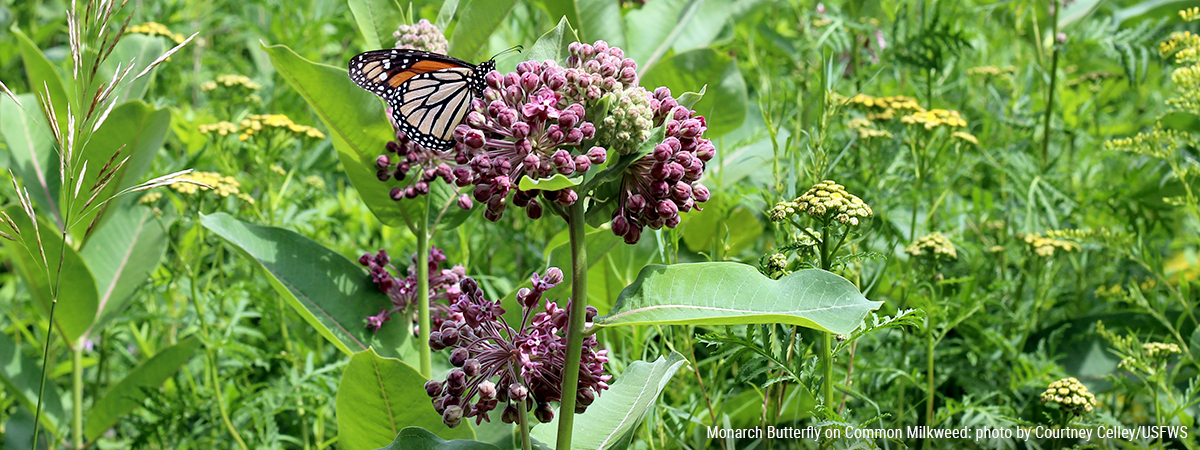If you are looking at this page, you must have received a seed packet from the Centerville-Washington Park District! The seeds were harvested, cleaned and packaged by volunteers to be given away. We are hoping to create pollinator habitats across Centerville and Washington Township!
Please note: Since our seeds are cleaned by hand, you will notice that there is some chaff (bits other than seeds) in your packets.
Why plant native seeds?
Because they help wildlife! Food chains start with healthy soil and plants. We cannot help our birds and butterflies without starting with the basics.
Planting your seeds
Seeds are best planted 1/3 of an inch into the soil. Most native seeds need to go through a winter so the freezing and thawing will break the seed coat. We recommend planting them before November. If they are planted in the spring, they may not grow until the following year, or they may not flower until then.
Seed List
Common Milkweed (Asclepias syriaca)
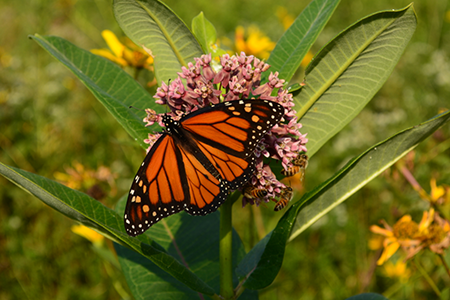
- Perennial
- Height: 3 – 5 ft
- Bloom color: Pink
- Bloom period: June – August
- Requirements: Full sun
- Benefits: Nectar plant to pollinators, Monarch Butterfly host plant
Compass Plant (Silphium laciniatum)

- Perennial
- Height: 3 – 10 ft
- Bloom color: Yellow
- Bloom period: July – September
- Requirements: Full sun, dry soils
- Ecological significance: Taproot can reach 15 feet — special value to native bees and bumblebees.
Foxglove Beardtongue (Penstemon digitalis)
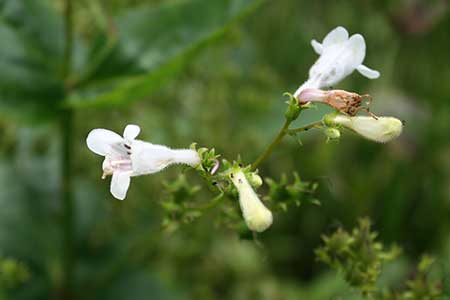
- Perennial
- Height: 2 – 5 ft
- Bloom color: White
- Bloom time: April – June
- Requirements: Sun – part shade, Moist – dry soil
- Ecological significance: This plant attracts hummingbirds and bumblebees. It has the designation of Special Value to Native Bees from the Xerxes Society for Invertebrate Conservation.
Gray-headed Coneflower (Ratibida pinnata)
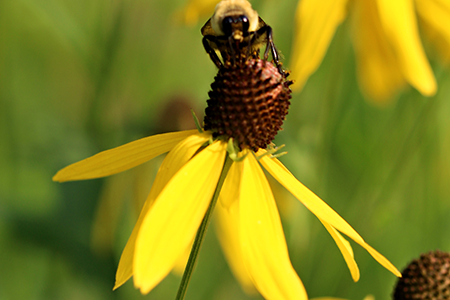
- Perennial
- Height: 3 – 5 ft
- Bloom color: Yellow
- Bloom period: July – late September
- Requirements: Full sun or part shade, Dry and moist soils
- Benefits: Birds eat the seeds
Marsh Blazing Star (Liatris spicata)
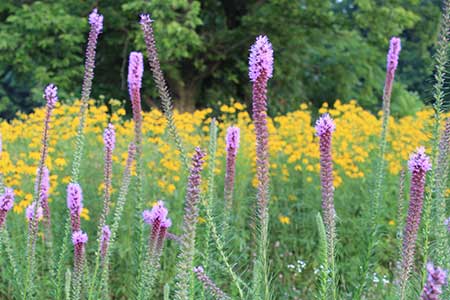
- Perennial
- Height: 2 – 6 ft
- Bloom color: Purple
- Bloom period: July – September
- Requirements: Full sun, moist soils
- Ecological significance: Liatris is a nectar source for butterflies and hummingbirds. It is also designated a Special Value to Native Bees by the Xerxes Society for Invertebrate Conservation.
Ohio Spiderwort (Tradescantia ohiensis)

- Perennial
- Height: 1 – 3 ft
- Bloom color: Purple, Blue
- Bloom period: May – July
- Requirements: Part shade, Dry soils
- Benefits: Bumble bees
Partridge Pea (Chamaecrista fasciculata)
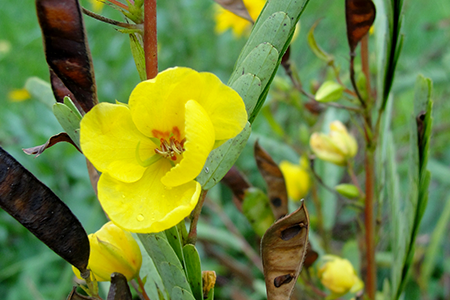
- Annual
- Height: 1 – 3 ft
- Bloom color: Yellow
- Bloom period: July – October
- Requirements: Sun or Part shade, dry-moist soils
- Benefits: Host plant of Silver Spotted Skipper Butterfly. Birds eat the seeds.
Prairie Dock (Silphium terebinthinaceum)

- Perennial
- Height: 3 – 8 ft
- Bloom color: Yellow
- Bloom period: June – September
- Requirements: Full sun, moist – wet soils
- Ecological significance: Special value to honeybees, bumblebees and other native bees.
Prairie Dropseed (Sporobolus heterolepis)

- Perennial
- Height: 1 – 3 ft
- Bloom color: Yellow/green
- Bloom period: June – August
- Requirements: Full sun, dry soil
- Ecological significance: Provides nectar for pollinators. Attracts hummingbirds, moths and bumblebees.
Purple Joepyeweed (Eutrochium purpureum)
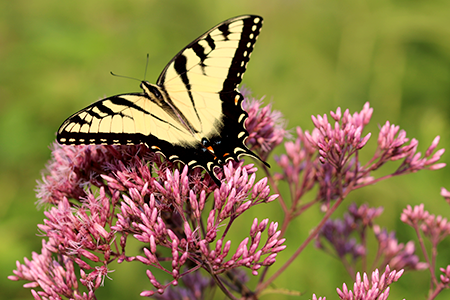
- Perennial
- Height: 3 – 6 ft
- Bloom color: Pink-Purple
- Bloom period: July – September
- Requirements: Sun – part sun, moist soils
- Ecological significance: Many bees use the nectar from this plant in honey production.
Rattlesnake Master (Eryngium yuccifolium)

- Perennial
- Height: 3 – 6 ft
- Bloom color: Green
- Bloom period: July – August
- Requirements: Full sun, moist soils
- Ecological significance: Special value to native bees.
Swamp Rose Mallow (Hibiscus moscheutos)
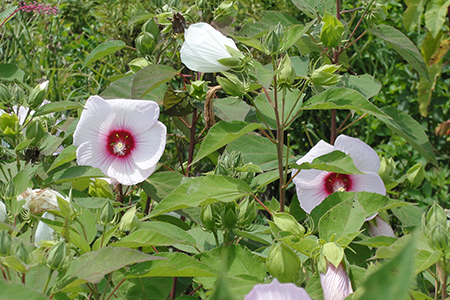
- Perennial (Shrub)
- Height: 3 – 6 ft
- Bloom color: White, Pink
- Bloom period: July – September
- Requirements: Sun or part sun, moist soil
- Benefits: attracts hummingbirds, bumble bees, moths
Wild Bergamot (Monarda fistulosa)
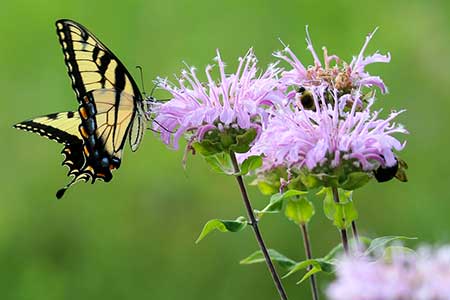
- Perennial
- Height: 2 – 5 ft
- Bloom color: Pink, Purple
- Bloom time: June – September
- Requirements: Sun – part shade, Dry – moist soils
- Ecological Significance: Nectar source for bees, butterflies, and hummingbirds. Special Value to Native Bees (designation by the Xerxes Society for Invertebrate Conservation)
Wingstem (Verbesina alternifolia)

- Perrennial
- Height: 3 – 5 ft
- Bloom color: Yellow
- Bloom time: August – October
- Requirements: Full sun, moist soils
- Ecological significance: Special value to honeybees, bumblebees and other native bees.
Moving forward
We encourage you to take steps beyond seeds to create a space for wildlife in your yard. We have a downloadable packet (PDF) to help you on your journey. This packet was created for families who want to certify their backyard through the National Wildlife Federation. It also has activities and opportunities to contribute to science!

